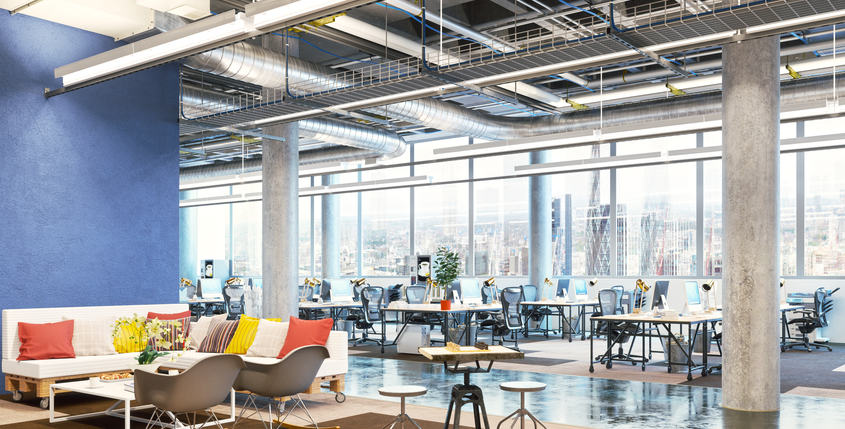Good office design is more than just aesthetically pleasing; it can help create a productive and comfortable working environment for employees. Just as sleeping in a poorly designed room will affect one’s quality of sleep, having an inefficient workspace can impact the mood and motivation of staff, decreasing productivity and overall morale. A carefully crafted workspace can express the company’s values and provide an atmosphere conducive to collaboration, encouraging people to develop and build relationships with their co-workers.
Good office design also plays a certain role in employee retention, as a well-designed office often turns prospective employees into long-term workers by demonstrating how much the organization values its staff. As such, it is essential that companies invest intentionally in crafting work environments that boost productivity and cultivate relationships among those who will be spending significant amounts of time within them.
Below are the key elements of a well-designed office that will optimize employee morale and engagement:
Natural Lighting
Natural lighting has been found to be a key element of well-designed offices focused on optimizing employee morale and engagement. According to numerous scientific studies, natural lighting has the potential to maintain circadian rhythms, reduce stress and eyestrain, as well increased alertness and productivity. In addition, providing employees with access to natural light can create a more peaceful environment, in turn leading to improved moods and overall well-being, as reported by researchers at the Harvard Business Review.
Incorporating natural sunlight into an office space not only allows employees to feel connected with their environment but also helps promote concentration and creativity among staff. Natural lighting should always be considered in any office design choice in order to better foster the ideal work atmosphere that increases employee engagement and ensures job satisfaction.
Flexible Furniture
Achieving the best office environment for maximum employee morale and engagement requires creating a space designed with employees in mind. Incorporating flexible, multi-functional furniture into the office can play a crucial role in promoting comfort and collaboration. Not only do such pieces of furniture provide stylistic unity through their cohesive designs, but they are also ideal for adaptation depending on people’s preferences, activities, and tasks.
For example, learning how an ergonomic chair can help with aches and pains will encourage employees to stay comfortable throughout their workday. Additionally, providing whiteboards and other surfaces for writing down ideas will encourage creativity and collaboration among teams as everyone can easily share information with each other in real time.
Ultimately, flexible furniture provides employees with a sense of ownership over the office space as they are given control to customize it according to their liking. When staff are given the freedom to make their workspaces their own, they will be more likely to stay motivated and enthusiastic about their job, leading to higher levels of employee engagement.
Organized Layout
Every workspace should be thoughtfully designed to optimize employee morale and engagement. One of the key elements for this is an organized layout that provides a sense of order. Spacious work areas with appropriate storage solutions, comfortable furniture, and dedicated workspaces can support the development of creativity, productivity, and job satisfaction in employees.
Additionally, strategically placing plants or artwork around the office can add a touch of greenery that helps improve air quality and promote a healthier work environment. Furthermore, incorporating healthy snacks into shared breakrooms will give employees an extra boost throughout their workday. All in all, an optimized office layout creates more space to inspire innovation while strengthening morale among workers.
Employee input is essential in crafting a workspace that optimizes morale and engagement. By keeping these key elements of a well-designed office in mind, employers can create an efficient work atmosphere that not only encourages productivity but also nurtures relationships among those who will be spending significant amounts of time within it.
What Are the Things That Affect Employee Morale and Engagement?
There are several issues that can affect employee morale and engagement. This includes things such as inadequate job security, lack of recognition in the workplace, poor working conditions, unrealistic deadlines, lack of a clear career path, and negative office culture. Additionally, employees may experience difficulty balancing work life with personal life if their employer does not offer adequate resources or flexible schedules to accommodate their needs.
Furthermore, unmet expectations or the lack of opportunities to learn new skills can also cause worker frustration, leading to disengagement and poor morale. Creating a workplace that understands and responds to these issues is essential for improving morale and engagement among staff. Employers should always strive to ensure that their employees feel respected, valued, supported, and appreciated.
Finally, employees are more likely to be engaged and motivated when they feel a sense of purpose in their work. Companies should strive to communicate the company mission and values in order to give their workers an understanding of why their work matters and how it contributes to the overall success of the business. This will help foster a positive work environment and promote productive and engaged employees.
Bottom Line
By taking the time to understand how different elements of the office design can influence employee morale and engagement, employers can create an efficient workspace that keeps their staff motivated and passionate about their work. With proper planning, companies can ensure that their workplace promotes productivity, encourages creativity, and fosters a sense of purpose in their employees.

